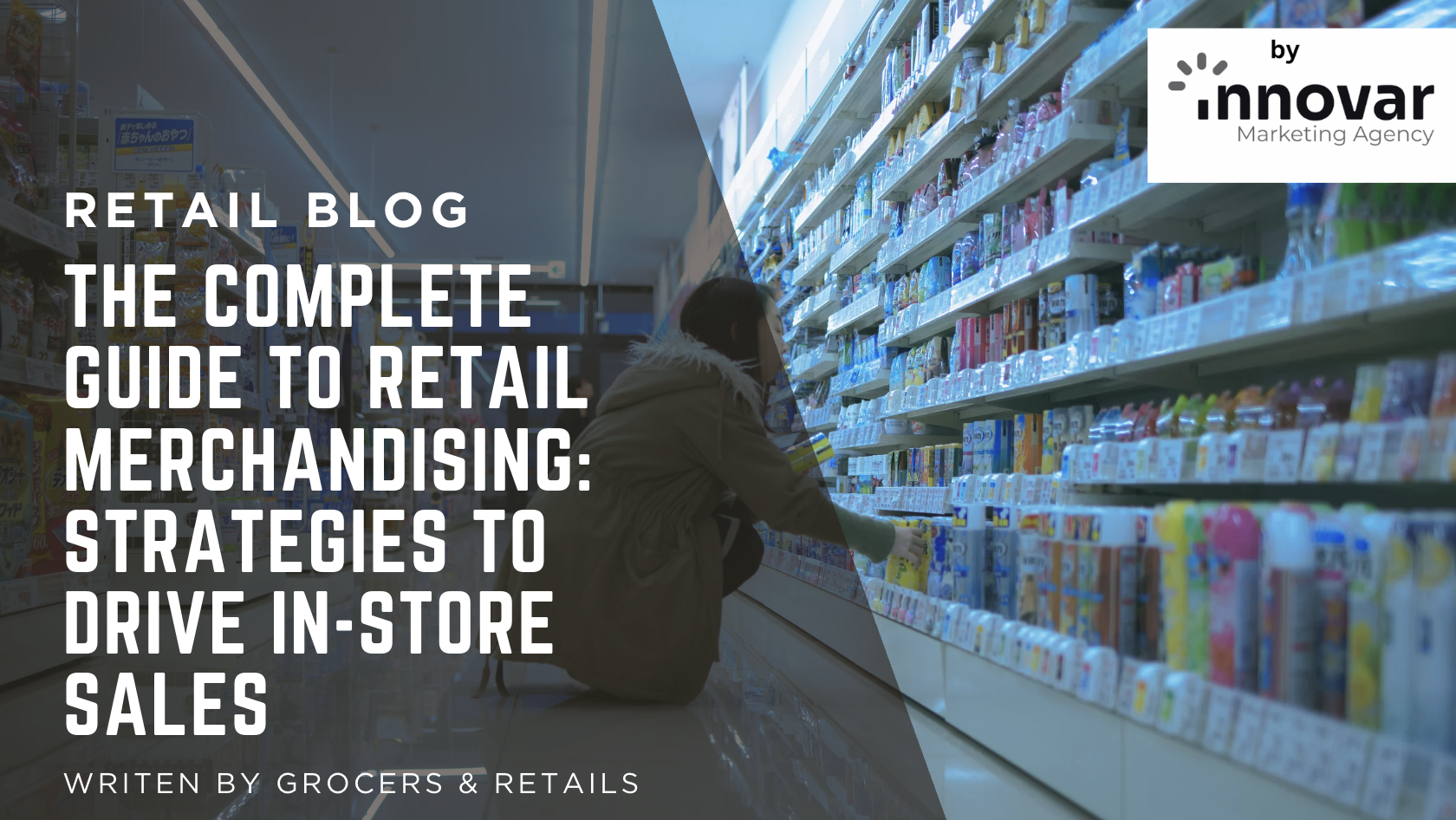The Complete Guide to Retail Merchandising: Strategies to Drive In-Store Sales
By George Goodwin
Introduction Retail/ Grocery Merchandising:
Why Retail Merchandising Still Matters in a Digital World Despite the rise of ecommerce, brick-and-mortar shopping isn’t going anywhere. In fact, 85% of UK shoppers say they still prefer shopping in-store (Drapers), and 74% reported missing the physical retail experience during lockdowns. Shoppers want connection, tactile experiences, and instant gratification—and retail merchandising plays a critical role in delivering that.
In this guide, we explore how retail merchandising can be used to create memorable in-store experiences, improve product visibility, and ultimately boost sales.
What is Retail Merchandising? Retail merchandising is the strategic organization, presentation, and promotion of products in a retail environment. From signage and layout to lighting and product placement, merchandising shapes how customers experience your store and what they ultimately buy.
Key Areas Include:
Store layout and flow
Product displays and fixtures
Lighting and decor
Visual merchandising
Signage and pricing
Inventory management
Why Retail Merchandising is Essential Retail merchandising helps customers:
Navigate your store with ease
Discover new or featured items
Get inspired to make impulse purchases
Connect with your brand through physical touchpoints
Retailers benefit through:
Increased conversion rates
Higher average basket size
Faster inventory turnover
Improved brand perception
Visual Merchandising vs. Retail Merchandising Visual merchandising is a subcategory of retail merchandising. It focuses on the aesthetics: colors, props, display heights, lighting, and signage that inspire and guide customer behavior. While visual merchandising tells your store's story, retail merchandising brings together product strategy, inventory planning, and customer journey design.
Elements of a Strong Merchandising Plan
Customer Journey Map: Define how traffic flows through your store. Shoppers typically move clockwise—so build layouts accordingly.
Product Prioritization: Promote seasonal, high-margin, or new arrivals at key locations like end caps and window displays.
Signage Strategy: Use directional, informative, and invitational signage to eliminate friction and guide decisions.
Lighting Plan: Highlight feature products and set the right mood.
Calendar of Events: Build a 12-month calendar tied to seasons, holidays, and local happenings.
Open-to-Buy Budget: Keep merchandise fresh with real-time inventory budgets to avoid dead stock.
Retail Merchandising Strategies That Work
Use the Rule of Three: Group products in threes to create visual interest.
Create Focal Displays: Place high-margin or seasonal products at eye level.
Leverage Cross-Merchandising: Bundle complementary items (e.g., smoothie cups, straws, and fruit).
Change Displays Regularly: Keep your store feeling new with rotating themes.
Tell a Story: Use signage and displays to connect emotionally with shoppers.
Retail Merchandising Software & Tools Modern merchandising requires real-time data and operational coordination. Software solutions help:
Ensure planogram compliance
Streamline team communication
Track inventory accuracy
Monitor foot traffic
Top Retail Tech Tools:
Planogram software
Shelf-level analytics
AI-driven traffic heatmaps
Visual task tracking (like OpSense or retailMetrix)
Signage Tips for Maximum Impact
Directional Signs: Guide customers to departments, fitting rooms, and exits
Informative Signs: Explain product benefits, uses, or ingredients
Invitational Signs: Create curiosity with clever messaging
Pro Tip: Add QR codes for tutorials, recipes, or reviews.
The HandyCart Workstation is a smart, portable solution designed for grocery stores, retailers, and merchandisers who need everything in one place. From labels and pens to notepads and planograms, this compact workstation helps store teams stay organized and efficient while labeling shelves or setting up displays. Created by a former grocery store operator, The HandyCart saves employees time and helps employers cut costs—streamlining in-store execution with one simple, time-saving tool. Learn more at thehandycart.com.
Should You Hire a Merchandiser? If you lack the time, creativity, or team bandwidth, hiring a merchandiser can deliver high ROI. They bring professional knowledge, vendor connections, and merchandising discipline that can immediately elevate your store.
If you're just starting out, doing it yourself helps you learn customer behavior firsthand—just be sure to track results and continually improve.
Key Takeaways
Retail merchandising bridges strategy, creativity, and psychology.
Visual storytelling and smart product placement boost sales.
Regular updates and seasonal refreshes keep shoppers coming back.
Digital tools now power real-time insights and execution.
Need Help Building a Merchandising Plan? At Innovar Marketing Agency, we work with grocers, boutiques, and brick-and-mortar retailers to create beautiful, effective, and data-driven merchandising strategies.
From planogram design to signage templates and display execution, we’re here to support your retail merchandising success.
Book a free strategy call to level up your in-store merchandising in 2025.

